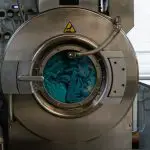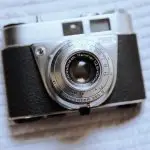Are you planning to use spray adhesive for your next project? If so, you may be wondering how long it takes for the adhesive to dry.
The drying time of spray adhesive can vary depending on several factors. Understanding these factors can help you achieve the best results and avoid any potential problems.
Spray adhesive is a popular choice for many DIY projects, including home décor, crafting, and upholstery. It can provide a strong and durable bond between different materials, including wood, metal, plastic, and fabric.
However, the drying time can be affected by several factors, such as the type of adhesive, the temperature and humidity of the environment, and the materials being bonded.
By learning about these factors and following some tips for getting the best results, you can ensure that your project is successful and long-lasting.
Table of Contents
Understanding Spray Adhesive
You don’t want to ruin your project by not understanding how spray adhesive works and how quickly it dries. Spray adhesive is a type of glue that comes in a pressurized can and is sprayed onto a surface. It’s commonly used for crafts, woodworking, and upholstery.
Spray adhesive works by creating a bond between two surfaces. When sprayed onto a surface, the adhesive forms a temporary bond that allows you to reposition your materials before it dries. Once the adhesive dries, it creates a permanent bond that is difficult to undo.
The drying time of spray adhesive varies depending on the brand and type of adhesive you use. Some adhesives can dry in as little as 30 seconds, while others can take up to an hour to fully dry. It’s important to read the instructions on your adhesive can and allow enough time for it to dry before handling your project.
Factors Affecting Drying Time
Factors affecting the drying time of spray adhesive include humidity, temperature, and the type of surface it’s applied to.
Humidity plays a big role in how long spray adhesive takes to dry. High humidity can slow the drying process down considerably, while low humidity can speed it up. The ideal humidity for spray adhesive to dry quickly and efficiently ranges between 50-70%.
Temperature is another factor that affects the drying time of spray adhesive. Generally, the higher the temperature, the faster the adhesive will dry. However, extremely high temperatures can cause the adhesive to dry too quickly, resulting in a weaker bond. On the other hand, colder temperatures can slow down the drying process, so it’s important to apply spray adhesive in a room with a moderate temperature.
The type of surface that spray adhesive is applied to also affects drying time. Porous surfaces, such as wood or fabrics, tend to absorb the adhesive more, which can result in a longer drying time. Non-porous surfaces, such as metal or plastic, may require a longer drying time to ensure a strong bond. It’s important to read the manufacturer’s instructions to determine the recommended drying time for the specific surface you’re working with.
How Long Does Spray Adhesive Take to Dry?
When using spray adhesive, you may be wondering how long it takes to dry. The drying time can vary depending on several factors, such as the type of adhesive and the environment it’s being used in. Generally, common drying times can range from a few seconds to several hours.
Common Drying Times
Typically, spray adhesive will dry in just a few minutes, but the drying time may vary depending on the specific product and application method. Some spray adhesives may dry faster than others, while some may require a longer drying time.
Additionally, the drying time can be affected by factors such as temperature, humidity, and the type of surface being adhered. For instance, if you’re using a spray adhesive to bond a porous material like fabric or paper, it may take longer to dry compared to bonding a non-porous surface like metal or plastic.
In some cases, you may need to wait for the adhesive to dry completely before you can use or handle the bonded surfaces. Therefore, it’s essential to follow the manufacturer’s instructions carefully and allow enough time for the adhesive to dry completely before using the bonded surfaces.
Factors Affecting Drying Time
You may notice that the drying time of your spray adhesive can vary depending on the temperature and humidity levels in your workspace. Here are some factors that affect the drying time of spray adhesive:
-
Temperature: The higher the temperature, the faster the adhesive will dry. However, if it’s too hot, the adhesive may dry too quickly and not have enough time to bond properly.
-
Humidity: High humidity can slow down the drying process as the adhesive needs to evaporate the moisture in the air to dry. On the other hand, low humidity can cause the adhesive to dry too quickly and become brittle.
-
Type of adhesive: Different types of spray adhesive have different drying times. So, it’s important to read the instructions carefully before using the adhesive to ensure you give it enough time to dry before bonding the materials together.
Tips for Getting the Best Results
To achieve optimal results when using spray adhesive, try these helpful tips to ensure a strong bond and fast drying time.
First, make sure that the surface you’re bonding is clean and free of any dirt or debris. Any contaminants can weaken the bond and slow down the drying process. Use a clean cloth or alcohol wipes to thoroughly clean the surfaces before applying the adhesive.
Secondly, apply the adhesive in a thin, even layer. A thick layer of adhesive will take longer to dry and may not bond as strongly as a thin layer. Hold the can about 6-8 inches away from the surface and spray in a sweeping motion, making sure to cover the entire area you want to bond. Avoid spraying too close or too far away from the surface, as this can also affect the drying time.
Lastly, allow the adhesive to dry completely before handling or applying any pressure to the bond. The drying time can vary depending on the type of adhesive and the environmental conditions, so it’s important to read the manufacturer’s instructions and give the adhesive enough time to dry. If you’re in a hurry, using a hair dryer on a low setting can help speed up the drying process.
By following these tips, you can ensure a strong bond and fast drying time when using spray adhesive.
Safety Precautions
When using spray adhesive, it’s important to take safety precautions to avoid any potential health hazards. To ensure your safety, make sure you have proper ventilation in the area where you’re using the adhesive.
Additionally, it’s recommended that you wear protective gear such as gloves and a mask to avoid any direct contact with the adhesive.
Lastly, make sure to store and dispose of the adhesive properly to avoid any accidents or harm to the environment.
Proper Ventilation
For optimal results, ensure there’s enough ventilation when using spray adhesive so that it dries properly. This is because spray adhesives contain chemicals that can be harmful if inhaled in large quantities. Without proper ventilation, the fumes can accumulate in the air, making it difficult for the adhesive to dry properly and putting your health at risk.
To ensure that you have enough ventilation, it is important to work in a well-ventilated area. This could be a room with open windows or a space with a properly functioning ventilation system. It is also important to wear a respirator or mask to protect yourself from inhaling the fumes. By taking these precautions, you can ensure that the spray adhesive dries properly and that you stay safe while using it.
| Pros | Cons | |||
|---|---|---|---|---|
| Quick drying time | Strong odor | |||
| Easy to use | Can be harmful if inhaled | |||
| Versatile application | Can be messy | Can bond various materials | May not be as strong as other types of adhesive |
Protective Gear
Make sure you have on the proper protective gear before starting to use spray adhesive, so you can stay safe while getting creative with your projects. Wear gloves to protect your hands from the adhesive and any chemicals.
It’s also important to wear eye protection to prevent any spray adhesive from getting into your eyes. In addition to gloves and eye protection, consider wearing a face mask to prevent inhalation of any fumes.
Spray adhesive can release harmful chemicals into the air, so it’s important to protect yourself from breathing them in. By taking these precautions and wearing the proper protective gear, you can enjoy using spray adhesive safely and without worry.
Storage and Disposal
Properly storing and disposing of spray adhesive is crucial for preventing accidents and protecting the environment.
When storing spray adhesive, make sure to keep it in a cool, dry place away from sources of heat or flames. Avoid storing it in direct sunlight or in areas with high humidity, as this can cause the adhesive to break down and lose its effectiveness.
When it comes to disposing of spray adhesive, it’s important to follow local regulations and guidelines. Many areas require that spray adhesive be disposed of as hazardous waste, which means it can’t be thrown in the trash or poured down the drain. Contact your local waste management facility to find out the proper procedures for disposing of spray adhesive in your area.
By taking the time to properly store and dispose of spray adhesive, you can help prevent accidents and protect the environment for future generations.
Troubleshooting
If you’re having issues with the spray adhesive not drying, try adjusting the distance between the can and the surface you’re spraying. If you hold the can too close, the glue can saturate the surface and not dry properly. On the other hand, if you hold the can too far away, the glue may not stick at all. Experiment with different distances until you find the sweet spot.
Another common issue with spray adhesive is over-application. If you apply too much glue, it can take much longer to dry, and may never fully set. To avoid this, use short, quick bursts of spray, rather than holding down the nozzle for a long time. Also, be sure to follow the manufacturer’s instructions for the recommended amount of glue to use per square foot of surface area.
If the adhesive still isn’t drying properly, you may need to consider the temperature and humidity of your work area. If the air is too cold or too humid, the glue may take longer to dry. Try increasing the temperature and/or using a dehumidifier to create a more optimal environment for the glue to dry. And always make sure to allow enough time for the glue to dry completely before handling or moving the project.
- Lyocell Allergies: Is This Hypoallergenic Fabric Right for You? - July 14, 2025
- Does Lyocell Fabric Pill? How to Prevent and Fix Pilling - July 14, 2025
- Does Lyocell Breathe? An In-Depth Look at Its Breathability - July 14, 2025






